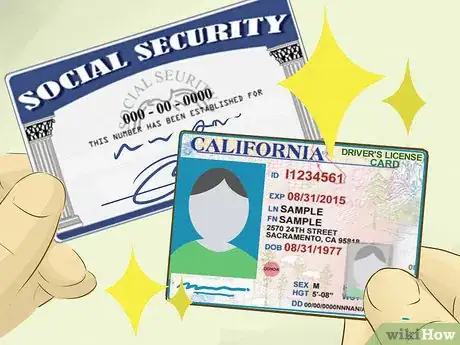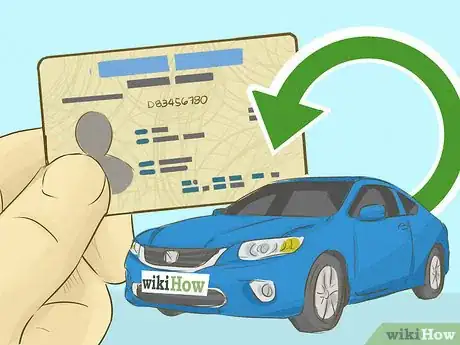This article was co-authored by Dhenu Maru. Dhenu Maru is an Immigration Lawyer, as well as the Founder and CEO of SwagatUSA, LLC. With over 10 years of experience, she specializes in family immigration and business immigration. She earned her law degree from Loyola University Chicago School of Law and her BA in Philosophy & Child Development from Tufts University. She was named a Rising Star by Super Lawyers for 2017, 2018, and 2019. She earned the title of Super Lawyer in 2021 and has been selected again for 2023.
There are 19 references cited in this article, which can be found at the bottom of the page.
wikiHow marks an article as reader-approved once it receives enough positive feedback. In this case, 93% of readers who voted found the article helpful, earning it our reader-approved status.
This article has been viewed 36,474 times.
Moving to the U.S. Virgin Islands (USVI) can be the adventure of a lifetime. You’ll have your choice of four amazing island options: St. Thomas, St. John, St. Croix, and Water Island. To make your move, decide on a date and book a shipping company for your belongings and any cars. Look into job options on the island and apply for a visa if you are not a U.S. citizen. Also, reach out to a real estate lawyer or realtor who can help you find a home to rent or buy. When all of these arrangements have been made, make your move and enjoy the island lifestyle!
Steps
Planning Your Travel and the Move
-
1Choose an island. You have four options if you’d like to move to the USVI: St. Thomas, St. John, St. Croix, and Water Island. St. Thomas and St. Croix are the largest and the most modernized, but they can be rather crowded with tourists. St. John is slightly smaller with some shopping available, but you will likely need to travel to the other islands for certain goods. And, on Water Island, you will get the benefits of isolation, but will need to head to St. Thomas for all of your supplies.[1]
- Go online to forums discussing each island and ask as many questions as you can of the residents currently living there. This will give you a better sense of the differences and similarities between them.
-
2Solicit advice from local residents. If you have a friend or family member who currently lives on the islands, get in touch with them. Tell them about your plans and ask for their help and advice. Describe the kind of lifestyle that you envision for yourself and tell them to be honest with you about whether or not you can find that in the USVI.
- If you don’t have a contact in the USVI, visit online blogs from current residents, including people who’ve relocated, to see what they would advise for both moving and settling in. They can give you an idea regarding local customs, such as proper travel etiquette for the safari bus.[2]
- To connect with locals, browse through USVI moving forums online. These sites are designed around a question-and-answer format with local “experts” volunteering to guide new arrivals through the moving and residency process.[3]
Advertisement -
3Make a short visit beforehand. If you’ve never visited the islands before, try to schedule a quick trip well in advance of your move date. This will allow you to see first-hand the neighborhood you’ll be living in. In fact, you may even take this chance to meet with a real estate lawyer or leasing agent.[4]
-
4Contract with a shipping company to move your belongings. Months before you plan to move, reach out to a maritime shipping agency. Some of these companies are listed on the USVI Moving website. The company will likely schedule an in-home survey of your items to see how much room they will require to ship. After that, they will give you an estimate based on the cubic footage needed.[5]
- Some companies will even offer to leave a shipping container at your home, giving you plenty of time to pack. Just make sure that the container will be delivered right to your new address or you may end up lugging items up an island hill as part of your move.[6]
-
5Arrange to ship your vehicle. Most islanders would recommend that you bring a car with you. Cars older than 2.5 years of age can avoid some of the required customs duties. If you want to avoid the hassle of customs check-in and licensing, there are companies on the island that will actually do that for you. Find them by contacting your island’s commerce office.[7]
- It is also cheaper to bring in a car that is both made AND assembled within the United States, as this lowers the customs fees. Find out if your car qualifies by checking the information on the driver’s side door panel.
- Some people ship two cars over as part of the moving process. They keep one car for their personal use and sell the other one to cover the total shipping cost. You’ll often get a deal for shipping two at once. It shouldn’t take you too long to sell the vehicles either. In particular, Islanders are often eager to buy solid, older model small trucks.[8]
-
6Gather all of your identity documents. If you are a U.S. citizen, then you’ll want to bring your social security card, current driver’s license, birth certificate, and non-expired passport. If you are not an American citizen, then you’ll need to obtain a visa for work and residency. When you make the move, bring any and all official forms of documentation that you possess with you.[9]
- The USVI fall under United States immigration requirements. The website for the Bureau of Citizenship and Immigration Services is a great resource for information about paperwork requirements.
Making Living Arrangements
-
1Create a living budget. Go through your finances and determine exactly how much you can spend on housing, food, entertainment, and other expenses each month. Estimate how much income you will be bringing in as well. This is especially important because island prices can come as a shock to some. The USVI follow the U.S. dollar, but the cost of particular items are often much more than the mainland.
- There are a variety of websites online that will give you a price comparison on some of the most commonly purchased goods. Eggs, for example, might cost you up to $6 per dozen. A gallon of regular milk can go up to $9.[10]
-
2Start looking for employment. If you already have a job waiting for you, that’s great. If not, then start your search months in advance by browsing some of the main career websites, such as Craigslist and Indeed. The USVI moving forums might provide you with some leads as well. It’s best to flexible when looking for a position, as many people come to the islands and switch career paths completely.[11]
- For example, it is not uncommon to hear about accountants becoming yoga instructors or hotel staffers. The key is to stay open-minded while still selling your current skill set.[12]
-
3Apply for a visa, if necessary. A non-U.S. resident will need to apply for an H1B, H2B, or student visa. You can find a detailed list of the requirements for these different visas at the Bureau of Citizenship and Immigration Services website. The H1B visa is the most common choice for professionals with a long-term job waiting in the USVI. The H2B visa is more short-term and intended for seasonal workers and the like. A student visa covers those persons attending a university on the islands.[13]
-
4File paperwork to move your business. Operating a business in the USVI requires that you get a license from the Department of Licensing and Consumer Affairs (DLCA), which covers all four islands. Your DCLA application will then put you in contact with other agencies of importance, such as the Police Department and Department of Planning and Natural Resources (for zoning).[14]
- Many companies move to the USVI due to the tax advantages offered, relative to the U.S. Some businesses see a reduction of up to 90% on corporate income tax.[15]
-
5Rent, timeshare, or buy a home. Each island has a Board of Realtors who can help you find a home to buy or rent. Owning a timeshare, renting, or leasing provides more flexibility if you believe that you’ll move around a bit between the islands. On the other hand, buying a home can be a good investment for anyone with ample funds who is looking to settle for a while.[16]
- On St. Thomas, for example, the average home price averages just over $500,000 for any given year. Condos start at around $150,000 and can be a more affordable option.[17]
- Some people prefer to purchase land and build a home on it. To do this you’ll need to work with a real estate attorney. Keep in mind that building can be quite costly as all materials must be imported.[18]
- Make sure to set up any utilities for your home well in advance. Most places offer a combination of electricity, water, and gas, often provided by the city.[19]
Getting Settled
-
1Look over a good map. Before you move or right after you arrive, get a map that shows each part of your island. One that lists landmarks and specific addresses is even better. Be prepared to see many versions of the same name, such as Contant and Upper Contant. Study this map as often as you can and write notes on it for reference.[20]
- Informal landmarks, such as unusual trees, are used for navigation purposes as well. You can expect to learn these over time.
-
2Study local etiquette. Every island, and even each neighborhood, has its own set of particular mannerisms. As you settle in start to watch how people around you behave in certain situations and try to mirror their actions. For example, it is common to say “good morning” to everyone you meet on the islands, even if they are strangers. Not doing so will mark you to the locals as a tourist.[21]
- Reading the local newspaper is a great way to understand what is going on around you. All of the big three islands have a specific newspaper that covers their activities. For example, in St. John you’ll want to read the St. John Tradewinds News.[22]
-
3Locate new schools for any children. Either immediately before or shortly after you move, start to look into the local education options. Both private and public schools are available for school-age children. Be aware that your children may need to travel by bus or ferry to get to certain locations. The U.S. Virgin Islands Department of Education provides a K-12 listing for interested parents.[23]
-
4Get a new driver’s license. The Bureau of Motor Vehicles (BMV) handles all license transactions. If you have a valid U.S. or foreign license it can usually be transferred without any additional tests. If you need an entirely new license, then you will need to take both written and driving tests. All of these actions require forms and fees, so check with the BMV before arriving.[24]
- Be aware that USVI residents drive American style left-hand cars. But, unlike mainland Americans, they drive on the left side of the road, like the British. This can be a bit of a shock to new island drivers.[25]
-
5Wait 30 days to apply for residency. If you are currently a U.S. citizen, after a month living on the island you can begin the process of applying for permanent resident status. You’ll need to show your birth certificate or passport along with a completed naturalization certificate. When this process is finished you’ll be able to vote.[26]
Community Q&A
-
QuestionHow do you get accepted to a university that is in the US Virgin Islands? Then I would like to know how I would become a person with a job who could afford an apartment?
 SareaCommunity AnswerMost universities in the US require foreign applicants to take an English as a second language test, such as the Test of English as a Foreign Language (TOEFL) or the International English Language Testing System (IELTS), and Scholastic Aptitude Test (SAT) exams for undergraduates or the Graduate Record Examination. Then you should rent, probably with someone else, in order to save more money to buy a house.
SareaCommunity AnswerMost universities in the US require foreign applicants to take an English as a second language test, such as the Test of English as a Foreign Language (TOEFL) or the International English Language Testing System (IELTS), and Scholastic Aptitude Test (SAT) exams for undergraduates or the Graduate Record Examination. Then you should rent, probably with someone else, in order to save more money to buy a house.
Warnings
- Obtain a vet health certificate for any pets travelling with you. If they are coming from the U.S. with a certificate, then they can usually avoid quarantine.[28]⧼thumbs_response⧽
Expert Interview

Thanks for reading our article! If you'd like to learn more about moving to the USA, check out our in-depth interview with Dhenu Maru.
References
- ↑ http://www.vimovingcenter.com/island_living/availabilitygoods.php
- ↑ https://petergreenberg.com/b/Moving-To-Paradise:-Life-In-The-U.S.-Virgin-Islands/132366879458360800.html
- ↑ http://www.vimovingcenter.com/faq/
- ↑ https://petergreenberg.com/b/Moving-To-Paradise:-Life-In-The-U.S.-Virgin-Islands/132366879458360800.html
- ↑ https://www.internationalmoving.com/moving-to-usvirginislands.html
- ↑ http://www.islands.com/how-to-move-to-st-john-usvi#page-3
- ↑ http://www.caribjournal.com/2015/08/24/how-to-move-to-st-thomas-us-virgin-islands/
- ↑ http://www.vimovingcenter.com/what_to_expect/
- ↑ http://www.vimovingcenter.com/faq/
- ↑ https://www.numbeo.com/cost-of-living/country_result.jsp?country=Us+Virgin+Islands
- ↑ http://www.visahunter.com/articles/how-to-find-a-job-in-the-us-virgin-islands-as-a-foreigner/
- ↑ http://www.islands.com/how-to-move-to-st-john-usvi#page-2
- ↑ https://www.expatify.com/guide/moving-to-us-virgin-islands
- ↑ https://www.usvieda.org/relocate-business/licensing-permits
- ↑ https://www.usvieda.org/relocate-business/edc-tax-incentives
- ↑ https://www.usvieda.org/node/598
- ↑ http://www.caribjournal.com/2015/08/24/how-to-move-to-st-thomas-us-virgin-islands/
- ↑ http://www.islands.com/how-to-move-to-st-john-usvi#page-3
- ↑ https://petergreenberg.com/b/Moving-To-Paradise:-Life-In-The-U.S.-Virgin-Islands/132366879458360800.html
- ↑ http://www.vimovingcenter.com/what_to_expect/
- ↑ https://petergreenberg.com/b/Moving-To-Paradise:-Life-In-The-U.S.-Virgin-Islands/132366879458360800.html
- ↑ http://www.here.vi/USVI/Relocation/relocation.html
- ↑ https://www.usvieda.org/relocate-business/living-here/education
- ↑ http://www.gotostcroix.com/st-croix-blog/obtaining-vi-drivers/
- ↑ https://petergreenberg.com/b/Moving-To-Paradise:-Life-In-The-U.S.-Virgin-Islands/132366879458360800.html
- ↑ https://www.vivote.gov/voters/register-vote
- ↑ http://www.caribjournal.com/2015/08/24/how-to-move-to-st-thomas-us-virgin-islands/
- ↑ http://www.vimovingcenter.com/pets/











































































